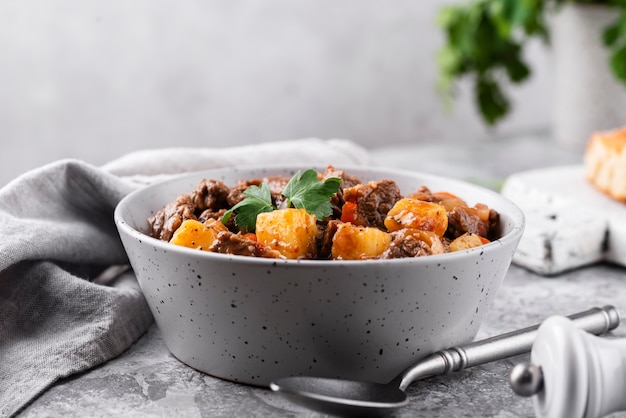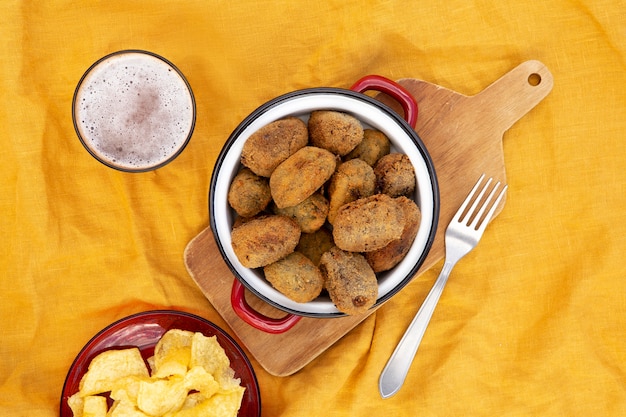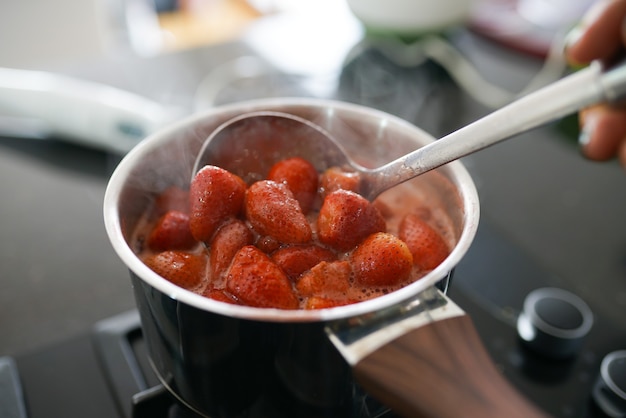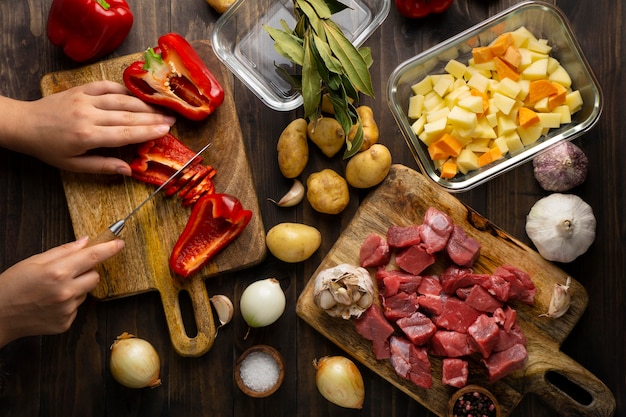Let’s face it, folks, we’ve all been there. You’re staring into the abyss of an empty fridge, the kids are howling for dinner, and the last thing you want to do is spend an hour slaving over a hot stove. Enter the trusty crockpot, my culinary knight in shining armor, and for me, nothing beats a hearty bowl of meatballs. But cooking frozen meatballs in the crockpot, especially on high, can be a bit of a culinary gamble. You’re basically throwing those frozen orbs into a hot pot and hoping for the best.
So, I decided to embark on a little culinary adventure, armed with a bag of frozen meatballs and a healthy dose of curiosity. I wanted to find out the optimal cooking time for frozen meatballs in the crockpot on high, and I’m here to share my findings, complete with tips and tricks that will have your family begging for more.
Part 1: The Experiment Begins

I started with a simple premise: I wanted to cook frozen meatballs in my trusty 6-quart crockpot on high, using a variety of brands and sizes. This wasn't just about throwing them in and hoping for the best, I wanted data. I wanted to understand how different types of meatballs behaved under high heat.
The Meatball Lineup
For my experiment, I gathered a trio of frozen meatballs, each with its own distinct personality:
- A classic Italian-style meatball, the kind you find in the frozen food aisle of most supermarkets. This meatball is usually a good size, somewhere between a golf ball and a tennis ball, and often comes with a savory sauce.
- A larger, "meatball-shaped" item that was more of a meatloaf-esque creation. These were significantly larger than the traditional meatballs, almost like mini meatloafs, and likely denser in texture.
- A smaller, bite-sized "mini meatball" designed for appetizers or pasta dishes. These tiny morsels, often found in bags labeled "cocktail meatballs," would require a shorter cooking time due to their smaller size.
I figured this variety would give me a good idea of how different shapes and sizes might affect cooking time.
The Crockpot – A Faithful Ally
My trusted crockpot is a 6-quart model, the kind you see in practically every kitchen. I’ve had it for years, and it's seen its fair share of slow-cooked wonders. For this experiment, I wanted to keep things consistent, so I used the same crockpot for all the different meatballs. Consistency, my friends, is key in a scientific experiment, even if it’s a culinary one!
Part 2: The First Trials – A Reality Check

I started by tossing a batch of the classic Italian-style meatballs into the crockpot, about 1.5 pounds worth. I set it to high and waited, my anticipation mounting with each passing minute. I envisioned a pot of perfectly cooked meatballs, ready for a delicious sauce and a comforting dinner.
The Results: Not So Perfect
After three hours, I cautiously opened the crockpot. The meatballs were cooked, but they weren't quite what I had hoped for. They were a bit dry, and the flavour seemed to have been lost in the cooking process. Oh, the disappointment!
I had a hunch that three hours on high was just too much for these meatballs. They were basically being roasted in a hot, steamy environment, and they just couldn’t handle it.
Part 3: Adjusting the Recipe – A Change of Pace

I knew I had to adjust my approach. I decided to try a shorter cooking time, just two hours on high, and see if that made a difference.
The Meatball-Shaped "Meatloaf" – A Different Breed
I threw a handful of the larger meatball-shaped items into the crockpot and set it to high for two hours. I was hoping that their larger size and denser consistency might hold up better to the heat.
The Verdict: A Slight Improvement – Not Quite There Yet
After two hours, I found that the "meatloaf" meatballs were definitely better. They were still a bit dry, but the flavour was more pronounced, and the texture wasn't as crumbly. It was a step in the right direction, but I still felt like something was missing.
It was at this point that I realized I had been focusing too much on the meatballs themselves. I hadn't considered the impact of a sauce! A good sauce could help keep the meatballs moist and add a whole new dimension of flavour.
Part 4: The Importance of Sauce – A Culinary Epiphany
I decided to go with a classic tomato-based sauce. I sautéed some onions and garlic, then added canned tomatoes, tomato paste, herbs, and spices. It wasn't fancy, but it was delicious and would be the perfect complement to the meatballs.
The Transformation – A Symphony of Flavors
With the sauce simmering in the crockpot, I added the classic Italian-style meatballs back in. This time, I set the timer for just 1.5 hours on high. I had a feeling that this was the magic combination I had been searching for.
As the timer buzzed, I eagerly lifted the lid. The aroma of tomato sauce and meatballs filled the kitchen, and my heart skipped a beat. The meatballs were perfectly cooked, tender and juicy, and the sauce had absorbed all the delicious flavours. It was a symphony of meatball perfection!
The Mini Meatballs – A Touch of Elegance
I couldn't resist trying the mini meatballs in the same sauce. They were a perfect addition to the mix, cooking through quickly and adding a delightful burst of flavour.
Part 5: The Findings – Unveiling the Secrets
After all this experimentation, I’d finally found the answer: Frozen meatballs cook best in a crockpot on high with a sauce, and the time varies depending on the size and type of meatball.
General Guidelines: A Roadmap to Success
Here are some general guidelines based on my findings:
| Meatball Type | Cooking Time on High |
|---|---|
| Classic Italian-style meatballs | 1.5 hours with sauce |
| Larger "meatball-shaped" items | 2 hours with sauce |
| Mini meatballs | 1 hour with sauce |
Of course, every crockpot is different, and cooking times may vary depending on the specific type of meatballs and your individual preferences. Always check the meatballs for doneness and adjust the cooking time accordingly. Use a meat thermometer to ensure the internal temperature reaches 165°F (74°C) for safe consumption.
Part 6: Tips for Success – Elevating Your Crockpot Game
Here are a few extra tips to ensure your crockpot frozen meatball experience is a resounding success:
- Don't overcrowd the crockpot. Give the meatballs plenty of space to cook evenly. If you’re working with a large batch of meatballs, you can cook them in two batches. This will ensure that they cook evenly and don't end up steaming instead of cooking.
- Use a good-quality sauce. Don't be afraid to get creative with your sauce. You can use a store-bought sauce, make your own from scratch, or even try a different type of sauce altogether. Experiment with different flavors – marinara, alfredo, barbecue, you name it!
- Add some vegetables. Onions, carrots, celery, and bell peppers are all great additions to your crockpot meatballs. They add flavour and texture, and you'll have a complete meal in one pot. The vegetables will add a layer of sweetness and complexity to your sauce, while also adding nutritional value to your meal.
- Serve with your favourite sides. Crockpot meatballs are delicious served over pasta, rice, mashed potatoes, or even a simple green salad. This will provide a well-rounded meal and allow you to customize it to your taste buds.
Part 7: The Joy of Crockpot Cooking – A Culinary Symphony
After all this, I'm reminded why I love cooking in the crockpot. It's so easy and convenient, allowing me to whip up a delicious meal without spending hours in the kitchen. And the best part? The whole family can enjoy a hearty and satisfying meal together.
So, next time you're staring into the abyss of an empty fridge, remember the crockpot. With a little bit of planning and a few frozen meatballs, you can create a delicious and easy meal that everyone will love. Trust me, it's worth the effort!
FAQs
1. What if my meatballs are still frozen after the cooking time?
If your meatballs are still frozen, they haven't had enough time to cook through. Increase the cooking time by 30 minutes to an hour and check them again. It's important to make sure the meatballs are cooked through to prevent foodborne illness. You can also check the internal temperature of the meatballs with a meat thermometer to ensure they reach 165°F (74°C).
2. What happens if I cook the meatballs on low?
Cooking frozen meatballs on low will take longer, but it will generally result in a more tender and flavorful outcome. Expect the cooking time to be doubled or tripled compared to cooking on high. For example, if a recipe calls for 2 hours on high, you can expect it to take 4-6 hours on low. This method is especially helpful for larger meatballs or those that are more dense, as it allows for more even cooking.
3. Can I add other ingredients to the crockpot with the meatballs?
Absolutely! Crockpots are great for creating one-pot meals. You can add vegetables, potatoes, or even beans to your crockpot meatballs for a complete and satisfying meal. Just make sure to add them in at the appropriate time, as some ingredients may take longer to cook than others. For example, root vegetables like potatoes and carrots might need to be added earlier in the cooking process to ensure they are fully cooked.
4. Can I freeze cooked crockpot meatballs?
Yes, you can freeze cooked crockpot meatballs for later. Simply let the meatballs cool completely and then store them in an airtight container in the freezer for up to 3 months. To reheat, defrost the meatballs in the refrigerator overnight and then reheat them in the oven or microwave. You can also reheat them directly from frozen in the crockpot, adding a little extra liquid to help them steam through.
5. What if I don't have a crockpot?
No worries! You can still cook frozen meatballs in the oven. Preheat your oven to 350 degrees fahrenheit (175 degrees Celsius) and bake the meatballs in a baking dish for about 30 minutes, or until cooked through. You can also add a sauce or other ingredients to the baking dish for added flavour and moisture.
Everyone is watching

Perfect Rice Every Time: The Ultimate Guide to Cooking Rice
Cooking TipsAs a self-proclaimed foodie, I've always been a bit obsessed with rice. It's the foundation of countless cuisi...

Ultimate Guide to Cooking the Perfect Thanksgiving Turkey
Cooking TipsThanksgiving. Just the word conjures up images of overflowing tables laden with delicious food, the scent of r...

The Ultimate Guide to Cooking Asparagus: Tips, Techniques, and Recipes
Cooking TipsAsparagus. The mere mention of this spring delicacy conjures up images of vibrant green spears, crisp and burs...

Can You Cook Spaghetti with Gasoline? (The Shocking Truth)
Cooking TipsWe've all seen those crazy internet trends. You know, the ones that make you wonder, "Did someone actually try...

Chorizo and Eggs Recipe: The Ultimate Guide
Cooking TipsRight, let’s talk about chorizo and eggs. You know, that classic Spanish dish that's always a winner. It's th...
